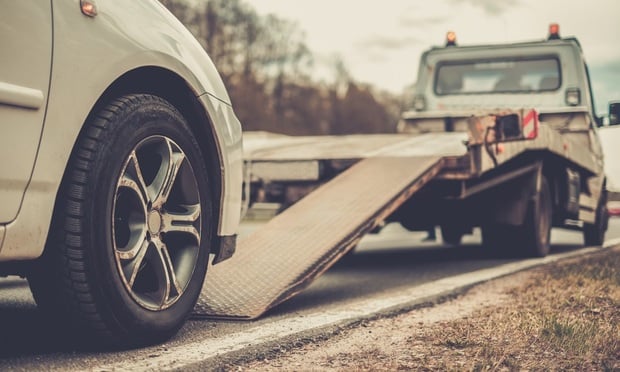 When the damaged vehicle is finally moved to a repair or salvage facility, the job is referred to as a "secondary tow," and it's an ugly, chaotic and archaic process. It's so bad that the only remedy at this point is to start over from a clean slate and redesign the process altogether. (Credit: Bigstock)
When the damaged vehicle is finally moved to a repair or salvage facility, the job is referred to as a "secondary tow," and it's an ugly, chaotic and archaic process. It's so bad that the only remedy at this point is to start over from a clean slate and redesign the process altogether. (Credit: Bigstock)
When there's been an auto accident, vehicles that are unable to be driven as a result are typically towed to a storage facility or an impound lot, where they will sit until an insurance adjuster can examine it to determine whether it's a total loss or could be repaired. In the meantime, the vehicle could languish at the temporary holding location for several days as storage, rental car and other claim-related costs mount.
Recommended For You
Want to continue reading?
Become a Free PropertyCasualty360 Digital Reader
Your access to unlimited PropertyCasualty360 content isn’t changing.
Once you are an ALM digital member, you’ll receive:
- Breaking insurance news and analysis, on-site and via our newsletters and custom alerts
- Weekly Insurance Speak podcast featuring exclusive interviews with industry leaders
- Educational webcasts, white papers, and ebooks from industry thought leaders
- Critical converage of the employee benefits and financial advisory markets on our other ALM sites, BenefitsPRO and ThinkAdvisor
Already have an account? Sign In Now
© 2025 ALM Global, LLC, All Rights Reserved. Request academic re-use from www.copyright.com. All other uses, submit a request to [email protected]. For more information visit Asset & Logo Licensing.








